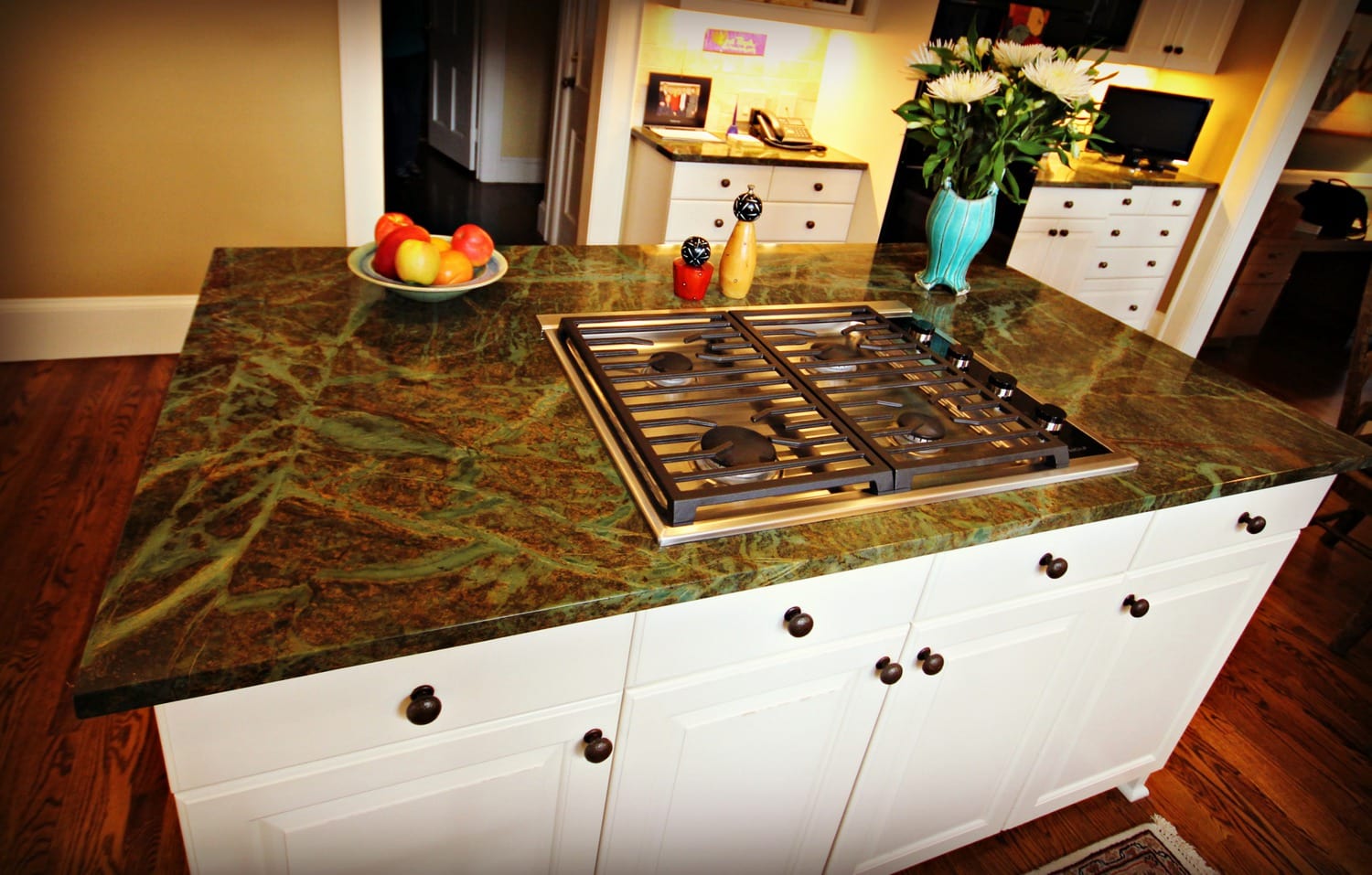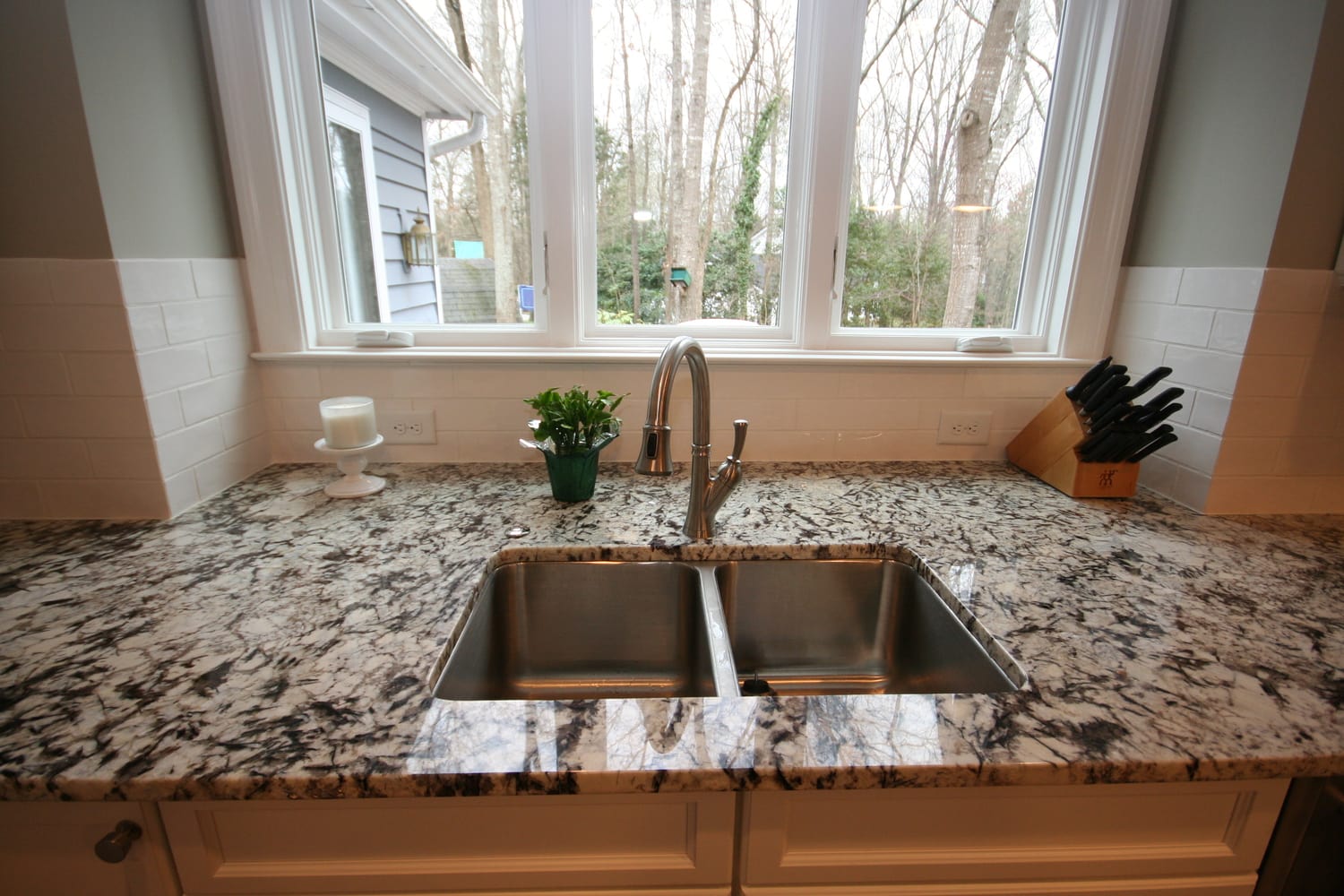The Dos and Don’ts of Cleaning Granite
In many people’s minds, granite means strength and resilience. But to clean granite countertops successfully, a homeowner must act with caution. The stone can actually be damaged by many of the products and techniques that are perfectly safe to use on other kitchen surfaces.

Photo Credit: Guthmann Construction
DO: Make sure your granite countertop is sealed. While granite is a very hard surface and less porous than marble, unsealed or weakly sealed granite will soak up oils, spills, and stains. To check whether your granite is sealed, leave a few drops of water on the surface. If it beads up, you have a secure seal. If after a few minutes the water has soaked into the granite, then it’s time to reseal the stone.
DON’T: Use harsh or abrasive cleaners and sponges, Windex, acidic cleaners like vinegar, lemon, lime, or anything with ammonia or bleach. Frequent use of these chemicals will dull and weaken the sealant over time. Basically, the harsher the cleaner, the quicker it will break down the sealant.
DO: Wipe up spills as soon as you notice them.
DO: Use warm water, a mild or gentle dish soap, and a nubby washcloth or microfiber cloth for daily wipedowns.
What About Disinfecting? A well-sealed granite countertop is relatively impervious to bacteria. Hot water and dish soap should be adequate for daily sanitizing. However, if a stronger disinfectant is desired, mix together a 50:50 solution of water and 91% isopropyl alcohol. Spray onto the granite, allow to sit for 3-5 minutes, then rinse with water and dry with a clean microfiber cloth. Avoid bleach or ammonia-based cleaners.
REGULAR CLEANING Your best bet is nothing more sophisticated than mild dish soap that’s been diluted with water. Bear in mind, however, that because granite scratches easily, the solution ought to be applied with a cotton cloth or soft sponge—that is, not with an abrasive scrubber. Before gently wiping down the counter, wring out the cloth or sponge so as not to compromise the highly absorbent stone (it can become discolored under standing water). Dry off the countertop as a final stage in this routine, not only to protect the granite from water damage but also to eliminate streaks and leave the surface with an eye-catching, irresistible shine.
STAIN REMOVAL Don’t panic! Most of the time, stained granite countertops can be cleaned with household items so common that you probably already have them in your pantry. No matter the source of the stain, start with baking soda. If you wish to clean a water stain, mix the baking soda with a small amount of hydrogen peroxide. For an oil-based stain, mix the baking soda with water. In either case, the mixture should generate a thick paste. Generously spread that over the stain, then cover the area with plastic wrap, taping down its edges. Leave the stain remover overnight (or even for a couple of days), before rinsing and wiping down the granite.
ADDING PROTECTION Most installations of granite are protected by a layer of sealant. If you’ve repeatedly tried and failed to remove stains from your counters, chances are that the sealant has ceased to function as it should. In situations where the sealant is to blame, stained granite becomes difficult or impossible to clean, at least for the average do-it-yourselfer. Your best bet is to hire a professional to completely clean and then properly reseal the stone, thereby preventing future problems.
Reblogged from Bob Vila






